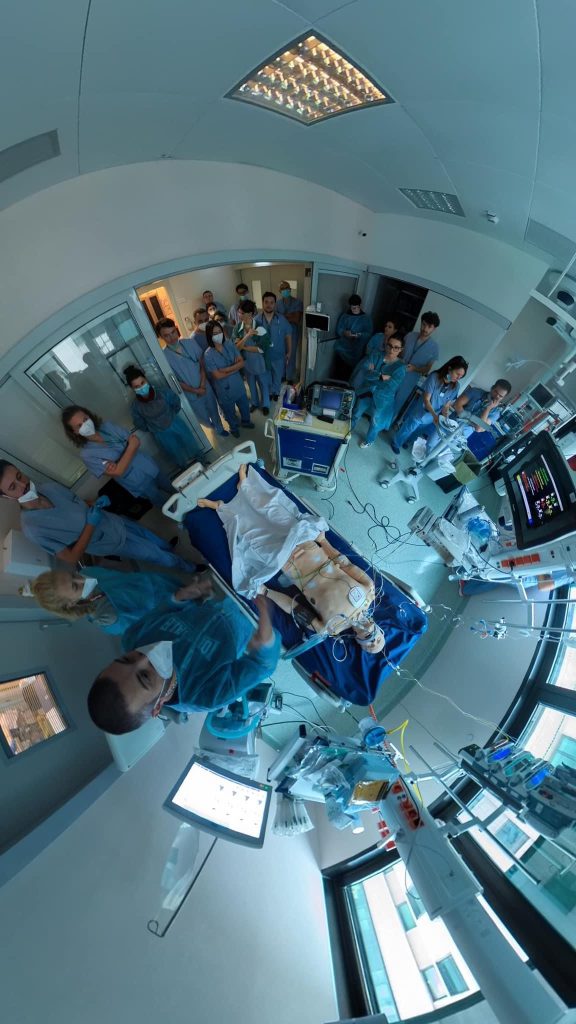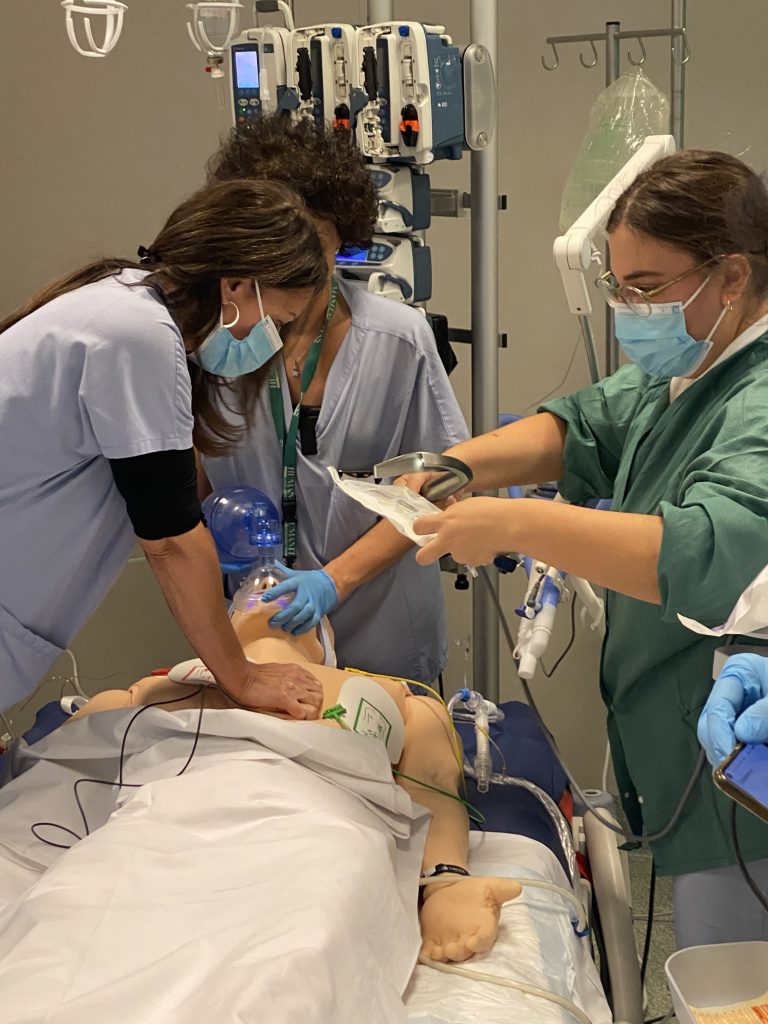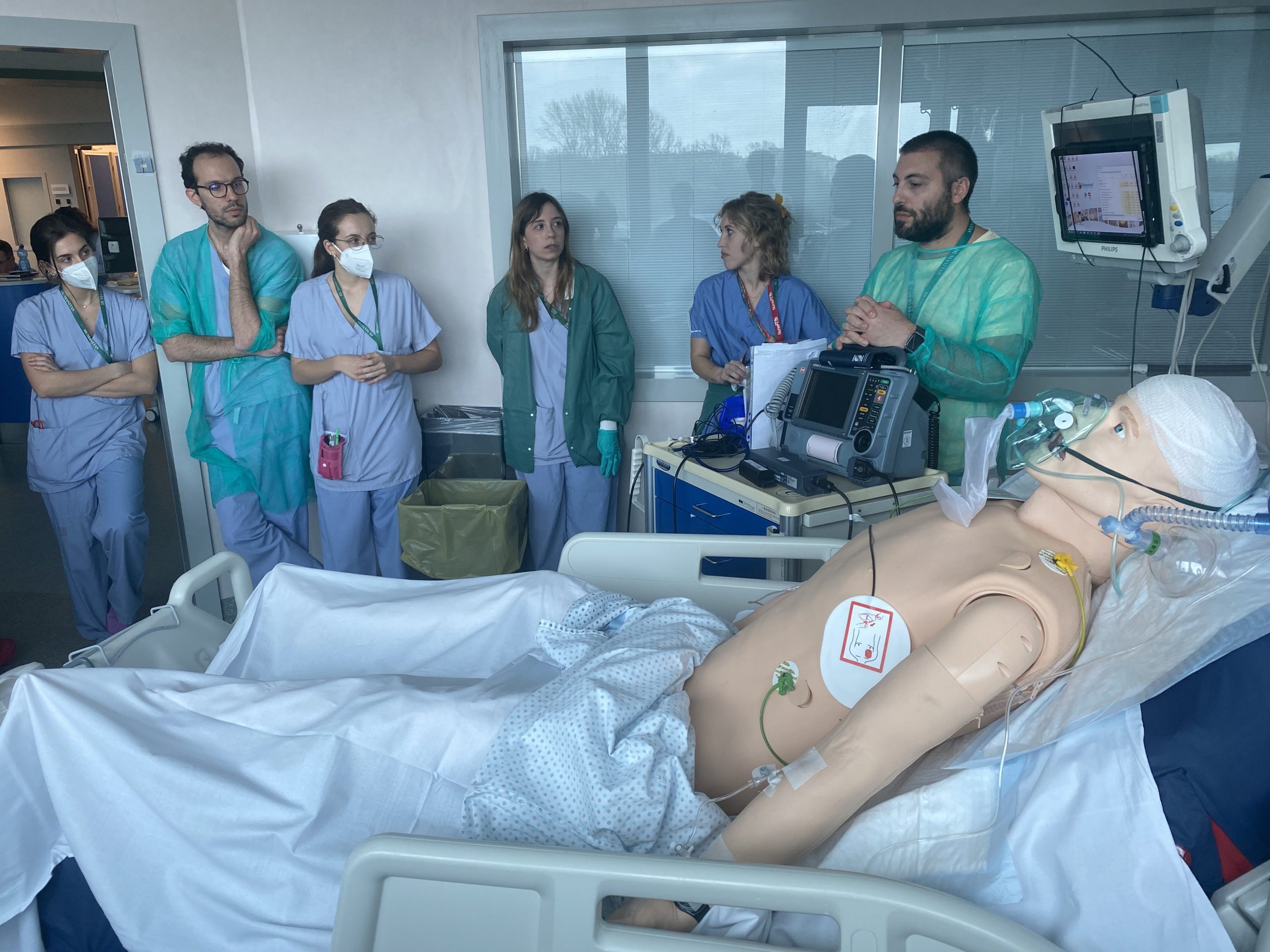Hospitals are intricate systems where patient safety depends on seamless collaboration between various factors. Clinical governance ensures accountability and continuous improvement in healthcare quality. While simulation is widely used for training, its integration into systemic patient safety efforts remains limited. The authors share their thoughts about the potential of in-situ simulations, incident reporting, and structured debriefing to address real-world risks, improve healthcare outcomes, and foster a culture of safety within hospitals through proactive, data-driven approaches.
Hospitals are complex systems within which various factors—environmental, human, technological, procedural, and quality-related—interact to form a dense network of relationships. Any disturbance in this network’s balance can pose a threat to safety. Patient safety has become a primary focus for healthcare improvement, therefore ensuring quality assurance is crucial and should be actively pursued as a fundamental value of healthcare organizations. Clinical governance is the means by which healthcare organizations are held accountable for constantly improving their quality services and delivering safe, effective and compassionate care. This is achieved by gathering several clinical and non-clinical professionals to discuss and constantly review several key aspects of practice. The basic structure of clinical governance is represented as a temple, with its foundation resting on five key cultural elements: systems awareness, teamwork, communication, ownership, and leadership. The pillars of the model—clinical effectiveness, clinical audits, risk management, patient and public involvement, staff management, education and training (including simulation), and openness — uphold the core partnership between patients and professionals.

Simulation is commonly employed across many healthcare domains with a focus on skills, teamwork, and communication. However, this application is often limited to educational purposes rather than full integration into systemic patient safety programs. Despite the benefits of simulation, there is a lack of widespread adoption and deep integration at a system level and there is a need for more deliberate alignment between simulation programs and the quality, risk, and safety leadership within healthcare organizations. A key aspect of this process is that the organization simulation program should be hard wired with the organization risk management and auditing team in a bi-directional way and data should be openly shared between the two departments
In-situ simulation, conducted within the hospital using real equipment and often during regular clinical activities, ensures that training is relevant and reflective of real-world scenarios, enhancing both technical and non-technical skills. This form of simulation helps learners feel more comfortable in their own environment and can reveal local system errors and latent threats that are often overlooked in off-site simulations. Latent safety threats are system-based threats that could predispose to medical errors. For example, faulty equipment, ergonomic hazards, or insufficient resources are common latent safety threats that can be discovered during these simulations. Scenarios, settings and teams used in these simulations should ideally be derived from the hospital’s incident reporting system, or when not available from real cases that happened in that specific organization, to address genuine risks and past errors, thus directly contributing to patient safety improvements, and ensuring that the training directly addresses real-world challenges.
Incident reporting is the practice of openly disclosing and documenting adverse events, near misses, medical errors, or other safety-related incidents that occur during the delivery of care. Incident Reporting Systems (IRS) are fundamental not only for collecting events but especially to feed data for reflection on why events happened and ways of preventing them. These reports can be used to inform training programs and policy changes which will lead to better patient care. IRS are typically based on computer platforms, usually web-based (although paper-based forms exist) where healthcare professionals report incidents confidently without fear of retribution. It is crucial to educate staff about the importance and role of a reporting system to reduce under-reporting of incidents due to fear of blame and to ensure that timely feedback can be given to them. From the IRS report and follow-up analysis the simulation program can build organization specific scenarios that allow for a thorough training and evaluation of team dynamics, procedural efficacy, and specific system vulnerabilities, ultimately leading to better local preparedness and response to critical events.

Effective debriefing plays a critical role in transforming simulation experiences into learning opportunities through structured reflection and feedback. Specific tools for debriefing in the context of quality improvement exist such as the PEARLS framework for Systems Integration (PSI) offers a structured approach to debriefing systems-focused simulations, aiming to identify and address gaps in the healthcare system rather than focusing solely on individual performance.
Finally, the outcomes of simulations conducted within the framework of clinical governance should be thoroughly documented and shared with key stakeholders, including hospital management. These findings can be communicated through posters, abstracts, and other formats to ensure that the lessons learned benefit the wider healthcare community and guide departmental and organizational leadership. This proactive approach aligns with the principles of high-reliability organizations, which emphasize continuous learning and improvement in healthcare delivery.
A real-world application
Since 2022, the 14-bed general adult intensive care unit at IRCCS Humanitas Research Hospital, a busy tertiary academic center, has implemented an integrated clinical governance program. This initiative includes a series of simulated activities, such as skill stations for nursing personnel, surprise drills to test the medical emergency team, and in-situ multidisciplinary clinical simulations to address actual safety concerns or near-miss events reported within the unit.
The in-situ simulation program began with the creation of a multidisciplinary working group composed of doctors and nurses. We then collaborated with key hospital departments, including risk management, simulation technologies, training and education, and communication. The risk management team reviewed incident reports related to our unit and helped select events to be transformed into clinical scenarios for the simulations. Simulation technologies facilitated the use of simulators and monitors from the local simulation center and managed their transport to and from the ward. The training and education department supported the transformation of simulations into official hospital training sessions, including CME accreditation, which proved to be an excellent strategy for ensuring staff engagement. Additionally, the communications and press office was
notified to capture photos and issue press releases, integrating the activity into the hospital’s internal
communications and intranet photo galleries.
To maximize the learning experience, we repeated each scenario three times over the course of two to three weeks, ensuring that the medical and nursing teams varied each time. The simulations were unannounced for the staff on duty, conducted in the early afternoon in a real clinical space, ideally a single room if available, without disrupting ongoing clinical activities. Collective feedback was provided at the end of each session, and the overall experience typically lasted about 30 minutes.
Further Readings
Carenzo L, Costantini E, Cecconi M. Clinical Governance in Intensive Care Medicine. 2024 Intensive Care Medicine
Phrampus PE. Simulation and Integration Into Patient Safety Systems. Simul Healthc. 2018;13(4):225-226. doi:10.1097/SIH.0000000000000332
Dubé MM, Reid J, Kaba A, et al. PEARLS for Systems Integration: A Modified PEARLS Framework for Debriefing Systems-Focused Simulations. Simul Healthc. 2019;14(5):333-342. doi:10.1097/SIH.0000000000000381
Benn J, Koutantji M, Wallace L, et al. Feedback from incident reporting: information and action to improve patient safety. Qual Saf Health Care. 2009;18(1):11-21. doi:10.1136/qshc.2007.024166
Lucena-Amaro S. Creating a sustainable simulation programme for enhancing patient safety in a critical care setting. BMJ Simul Technol Enhanc Learn. 2020;6(2):110-111. Published 2020 Mar 2. doi:10.1136/bmjstel-2018-000405 F, Semmer NK, Rock L, Howell MD, et al. Teamwork and leadership in cardiopulmonary resuscitation. J Am Coll Cardiol. 2011;57(24):2381-8. doi: 10.1016/j.jacc.2011.03.017. PubMed PMID: 21658557.
READ ALSO








































